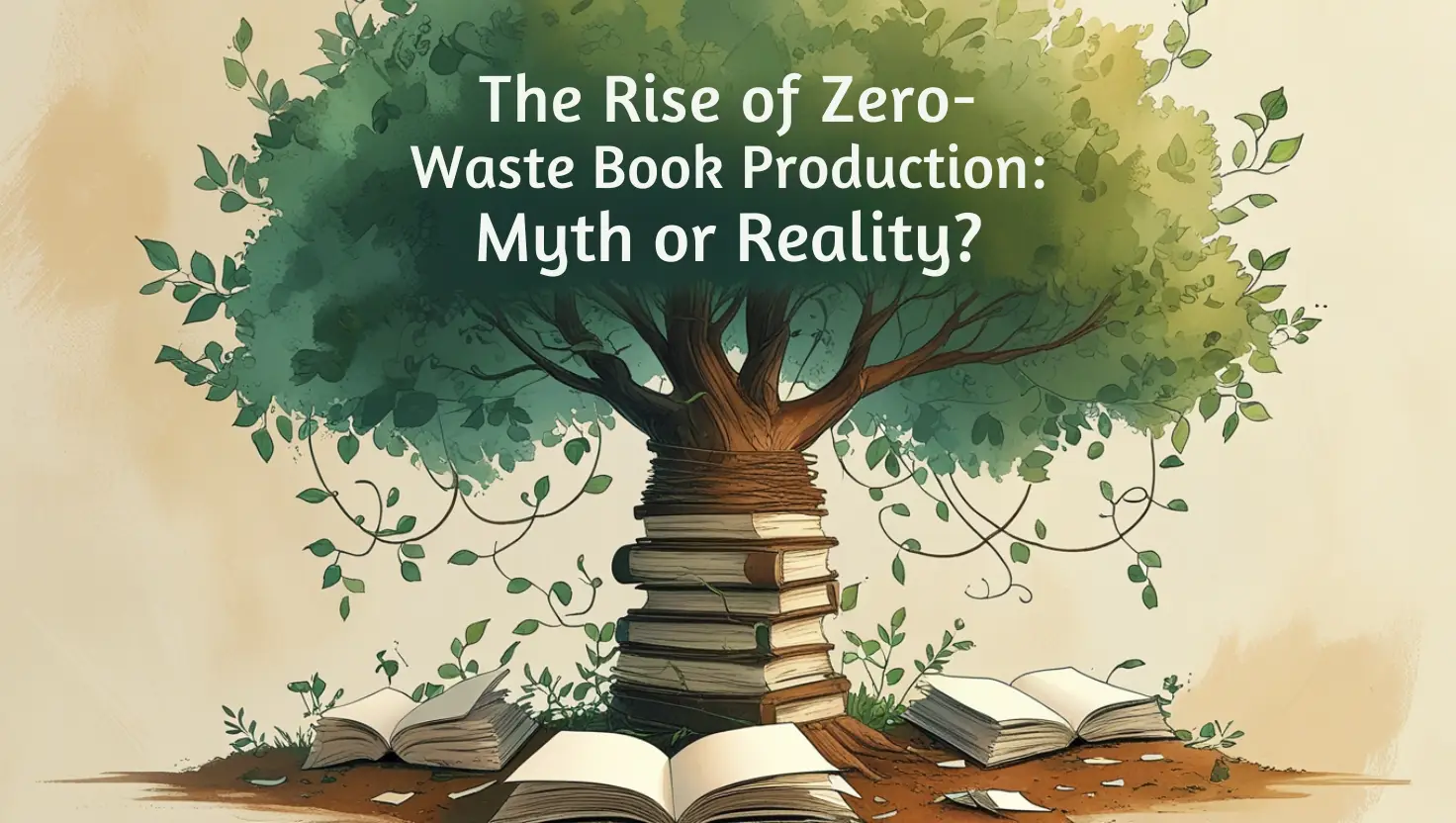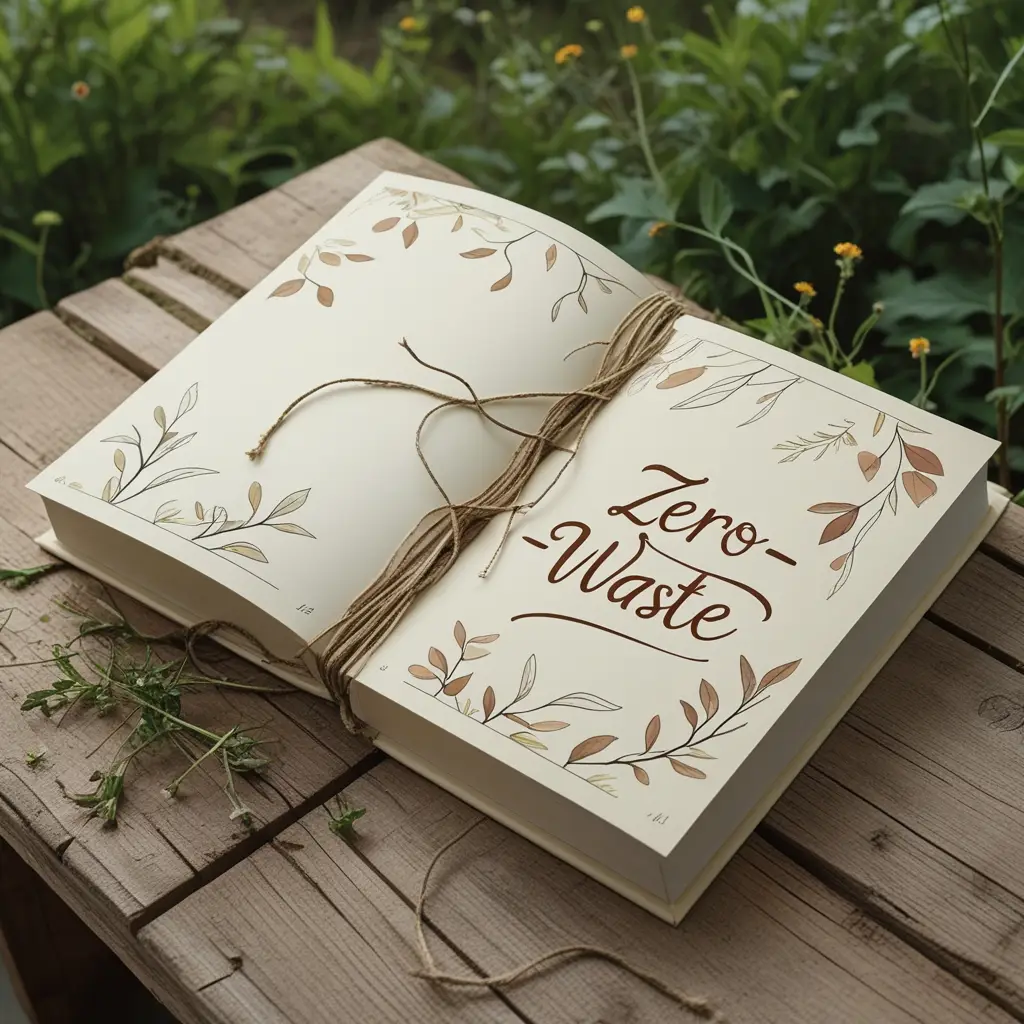The Rise of Zero-Waste Book Production: Myth or Reality?

The publishing industry is continuously changing and evolving and we are seeing the rise of a new phenomenon in the form of zero waste book production.
This can be interpreted multiple ways and it can be completely about not printing any physical books and that would truly be zero waste book production.
But we are not talking about that. We are talking about traditional book publishing in the print medium and keeping it is zero waste or minimal waste at the same time.
In this blog, we are going to find out how climate consciousness and the need for sustainability are slowly but surely entering the book publishing market and how book production is undergoing a very amazing change and leading the way when it comes to sustainability.
This is a natural progression and you will find it quite interesting to check out of this progression on how different traditional book publishing companies are cutting down on waste.
So, before we look at how publishers are cutting down on waste, we need to understand how this waste is generated in the publishing industry.
Understanding Waste in Traditional Book Production

Overproduction
One of the biggest sources of wastage in the publishing industry is the overproduction of books and this usually happens when the author or the publishing company sets a wrong estimate of how the book is going to perform.
There is practically no accurate method of calculating how a book is going to perform and that is why overproduction might be an issue from time to time.
This can happen to any publisher and any author. In fact, this even happens to very popular bestsellers their readers might be more interested in other formats such as audiobooks or ebooks.
Paper Waste
There is a lot of paper wastage in any publishing process because, during the printing process, there might be misprints and other issues that are simply going to waste paper.
Apart from that take any book and it is generally going to produce some paper waste because of the process of trimming the book so that it looks nice and making the rough edges smooth.
Apart from that you also have things like test prints which will never make it to the readers and can be basically considered as wastage.
Ink and Chemicals
While publishers try to improve the quality of materials and chemicals utilized in printing they can only do so much because certain compositions of chemicals are not really the best for the environment.
However, you cannot substitute that for something organic and eco-friendly because that may not produce the best quality of print and might not even last a long time.
This is the balance publishing companies have to go through because they have to balance quality and sustainability at the same time and so utilising these chemicals can leave behind harmful residues.
Energy Use
The creation of a single book can take up a lot of energy because you need to understand the process a book goes through.
The printing press needs to run a lot of machines in the printing of the book and that takes up energy. Apart from that you are also spending energy in shipping the books and also storing them in warehouses that need to have systems to prevent humidity from accumulating.
And the process of utilising energy is not always 100% efficient so you can expect wastage here.
Returns and Pulping
The biggest form of energy wastage and wastage of materials, in general, can be in the process of returns and pulping. When unsold books are returned, you need to recycle all that paper into something that can be printed on again.
During that process, you need to spend a lot of energy and convert that printed paper into raw paper. Additionally, you have just wasted all the energy that was primarily utilised in creating the book in the first place.
What Does “Zero-Waste” Book Production Really Mean?

Zero waste book production is basically utilising methods in order to minimise wastage and minimise environmental harm across the life cycle of the book.
You can do that in multiple ways and utilise techniques during the production process to the distribution process and even in the storage or disposal process of books.
Some of these steps can include:
- Sustainable paper sourcing
- Eco-friendly inks and printing methods
- Efficient production models (e.g., print-on-demand)
- Recyclable or biodegradable packaging
- Minimal energy consumption and carbon emissions
- Circular business models for returns and reuses
Technologies and Practices Leading the Change for Zero Waste Publishing
Print-on-Demand (POD)
POD is a very recent phenomenon and a practice that is probably the most significant when it comes to reducing wastage.
Print on demand basically means printing the book when the copies are ordered. This is not like the typical traditional method of running initial print cycles of a few thousand copies based on guesswork.
This is a very fast and efficient process where extremely small batches of books are printed whenever there are orders.
While it is still not like printing a single book when an order is placed but we are definitely getting to that point where the printing process is going to become so efficient that it will be able to print like that.
At the moment POD processes even utilise different algorithms in order to predict book demand so as to print small batches accurately.
Recycled and FSC-Certified Paper
If you want to stop wastage then you can do that in the initial steps as well and that begins with utilising recycled paper.
You can either get paper from a recycler that you trust or you can even utilise FSC (Forest Stewardship Council)-certified paper that can guarantee you high-quality recycled paper.
Soy and Algae-Based Inks
In addition to utilising recycled paper, you can also try out eco-friendly alternatives when it comes to the chemicals being utilised in the printing process and especially the inks involved.
Recently ink technology has gotten to the point that we are gradually moving away from our dependence on petroleum-based inks to eco-friendly ink alternatives such as soy and algae-based inks.
Digital Publishing
If you want to utilise this zero-waste methodology in the best way possible then you can altogether not print physical books and completely do a digital publishing run.
This involves releasing your book in ebook versions only as well as audiobooks. This will significantly reduce waste and energy consumption in the creation of the book.
Carbon Offsetting
If you are still finding it difficult to reduce your carbon footprint because some steps simply cannot be 100% zero waste, you can try out green initiatives to offset the negative effect by for example planting trees or supporting green initiatives and organisations to help them out.
We hope this blog has helped you understand what is zero-waste book production and how traditional publishing companies are doing their best to help out in this initiative.
We are Orange Publishers and we are a legacy book publishing company and we are also doing our best when it comes to zero-waste book production.
From utilising eco-friendly methods in our printing process to encouraging digital publications we are doing it all at our publishing company.
We welcome you to visit our website and check out everything we do and we would love to print your masterpieces.


